|
Four years ago today, on October 1, 2019, my husband and father of our children passed away. I have occasionally written about Robert, always referring to him as “The Restaurateur.” In addition to three successful restaurants in NYC, Robert had a small theater nightclub and recording studio. He was a true “Renaissance Man,” embracing all he could with boundless energy. And it is Robert who gets the credit for introducing me to the world of wine and encouraging me to explore my palate. The first wine Robert ever poured for me was on our second date, a 1969 Petrus. It was an “aha” moment for me. I fell in love with wine! I have one bottle left of the 1969 Petrus, and I can’t bring myself to open it yet. But I have a feeling that the moment will choose me! For 44 years, we cataloged many memories, some of which were not the best. I’m sure those who knew us and are reading this now are shaking their heads remembering a few notable and movie-worthy scenes! However, we did create beautiful memories with our sons and a shared passion for wine, food, and music that endured through the years. Our collection of wine grew over the years, and when Robert passed away, I inherited the bulk of the wine left over from his last restaurant. There are some gems in this collection that I haven’t touched. And I can hear Robert saying, “What the hell are you waiting for?” So, I’ve decided to open two wines today in his memory. They are old vintages and likely not good, but let’s explore! Far Niente Estate Bottled Cabernet Sauvignon, Napa Valley 1987 John Benson, a forty-niner of the California gold rush, founded Far Niente Winery in 1885, which is situated in western Oakville, Napa Valley. Far Niente fell victim to Prohibition in 1919 and soon was abandoned. In 1979, Gil Nickel purchased the vineyard and winery. The property took three years of restoration, but the hard work led to placement on the National Register of Historic Places. In 1982, the winery’s first Cabernet Sauvignon and Chardonnay were harvested. The Cabernet Sauvignon grapes are grown in the Martin Stelling Vineyard behind the winery, encompassing 57 acres. With a moderately warm climate and gravelly loam soil, the stage is set for producing complex, richly textured, fruit-forward wines. This wine was aged in new Bordeaux Chateau French oak barrels for 18 months. Alcohol: 13.5% The color was ruby red. I decanted the wine and tasted it immediately, then let the wine sit for a few hours. My first impression was quite good. Dark berries, cherry, and spice on the nose, with the palate offering sour cherry, a hint of plum and silky tannins. My second aroma and taste sample took place about four hours later. Instead of opening up a bit more, the wine, unfortunately, took a turn south. Although the aromas were still pleasant with blackberry, cherry, tobacco, and earth notes, the palate did not improve. Drinkable? Yes, but not enjoyable. In 2018, I opened the 1990 vintage, and it was excellent. I still have 1983, 1986, 1988, and 1989 vintages to explore! Château Beychevelle Grand Vin Saint-Julien 1976 Château Beychevelle is a historic property dating back to the 1500s and is considered one of the most beautiful castles in the Médoc, in the Bordeaux wine region of France. Château Beychevelle vineyards are spread over 90 ha of vines composed of Fourth Growth Bordeaux Cabernet Sauvignon, Merlot, Cabernet Franc, and Petit Verdot. The 1976 Château Beychevelle is a Bordeaux red blend from the Saint-Julien appellation. This wine was aged in French oak barrels, 53% new barrels, for 18 months. Alcohol: 12%. I was not expecting this wine to be good since the cork crumbled immediately. I decanted the wine through a sieve and was surprised the color was a touch more red than tawny, but it was also cloudy. As I was decanting the wine, aromas of sweet red fruit, plum, and musty forest floor wafted my way. Being an optimist, I took this as an encouraging sign. I took a sip, and it was not drinkable. I waited for several hours in the hope that the wine might open. The second test showed a significant waning of aromas with only a hint of red fruit. Unfortunately, it was not drinkable. Some of the old vintages from my collection have stood the test of time and are still drinkable; others are not. I will continue to open bottles; hopefully, a few gems will still be sip-worthy. My lesson for the day is to listen to Robert and “open all the damn wine!” Sometimes, when I open a bottle of wine, I wonder, “What would Robert think of this?” or “Wow, he would have loved this wine!.” And then there are the wines I open that bring back all the good memories of our journey together. Here is a slideshow of part of our journey. Maroon 5 has a hit song called “Memories Bring Back You.” Whenever I hear it on the radio, I smile, think of Robert, and sing along. Here is the first verse of the song. … Here's to the ones that we got Cheers to the wish you were here, but you're not 'Cause the drinks bring back all the memories Of everything we've been through Toast to the ones here today Toast to the ones that we lost on the way 'Cause the drinks bring back all the memories And the memories bring back, memories bring back you. Cheers to you, Robert! We miss you! ❤️ Until next time…
Cheers! Penina To leave a comment or if you have an inquiry, please contact me at [email protected] This past September, I toured the Côtes de Bordeaux region in France and had the opportunity to meet with many estate owners throughout its five appellations. Not only were the wines a treat for my palate, but the down-to-earth enthusiasm and passion for the land and all things wine were a constant presence and a joy to experience. My last day of this magical tour was with the Rey family, owners of Domaine des Graves d’Ardonneau. The fog was dense, and the air held an odd mixture of sweet blooms and smoke drifting from the fires burning in Bordeaux, but I was excited about the visit and ready to embrace this last adventure before returning home. Most of my time at Domaine des Graves d’Ardonneau was spent with Fanny Rey, whose primary role is export manager, although she likes to call herself a “poly worker.” In addition to export management, traveling, and arranging wine tastings, she works in the vineyards, helps her older brother in the cellar, and even drives the forklift. “I go where I’m needed,” Fanny said. She also divulged that she studied opera and International Business before returning to the Domaine in 2008. Fanny: “My brother knew at age seven that he wanted to be a winemaker. I didn’t want to be in the business and needed to explore other options. While away, I gained an appreciation for wine. Eventually, I realized that family, history, and heritage are important. It’s better at home.” When I asked Fanny what generation she is, she answered, “I don’t know exactly. We go back to the 18th century, but I am 4th or 5th generation for sure!” Domaine des Graves d’Ardonneau dates back to 1763. A legal document dated January 15th, 1763, proves that the family was settled here. Fanny: “Originally, it was a small village with five families. Little by little, my great-grandparents bought the existing houses and now it is just our family.” Fanny’s parents, Christian and Pascale, live at the Domaine, and Fanny and her brother Laurent live in their own homes nearby. Laurent studied at the Faculty of Oenology in Bordeaux and joined the Domaine in 2006 as a winemaker. Being is a family affair, everyone was busy, so it was catch as catch can with taking photos! Fanny explained more about the family’s history. Fanny: “Our history began with a woman. The maternal side was the strength of the family through several generations. This is important because it was usually passed from father to son, but not in our family. For generations, the business passed from mother to daughter. It wasn’t until my grandmother gave birth to my father that it changed.” I asked if any of the women made wine. Fanny. “There were no women winemakers in my family, but they helped in other ways. At one time there was a belief in France that if you allowed a woman in a wine cellar, it would not be good, and the wine would spoil. But, of course, that belief does not exist today!” And who makes the wine today? Fanny: “My grandfather, Simon, who passed away about 25 years ago, made wine. Now my father and brother are the winemakers, but mostly my brother. My grandfather (Simon) was called a heretic because he always harvested the grapes after everyone else, at least 15 days later. He said, “A good mature fruit will make a good wine. A good grape is one you want to eat.” That tradition is still used today with our harvesting. My grandfather felt it was important to go beyond what everyone else was doing. He came from Spain and began working in the Bordeaux area when he was 14.” Simon eventually met Huguette, daughter of Germaine and Remi, and once married, they worked together, expanding the domain in Huguette’s family. Sadly, Huguette passed away two days ago, shortly before this article was published. Simon named the domaine in the 1970s. And the first bottle of wine was produced under the Domaine des Graves d’Ardonneau label in 1973. Fanny: “Little by little, the wine business grew, and my grandparents began to bottle the wine and sell it in France. In 1982, my parents joined them, and they began selling the wine outside of France.” The domaine is located in Blaye, the largest of the five appellations in Côtes de Bordeaux. Blaye covers 6500 hectares located on the Gironde Estuary. The majority of vineyards here are cultivated on hillsides benefiting from ample sunshine conditions with a primarily temperate climate and a maritime influence. These fruit-forward wines also benefit from the rich terroir, with mostly clay-limestone soil around the town of Blaye. To the north, sand and gravel are suitable for Sauvignon Blanc, and more varied soils are in the southeast. Each estate is about 15 hectares, and red wine production dominates. Domaine des Graves d’Ardonneau is the exception to the rule regarding owning land in Blaye. What once was just a farm with less than ten hectares of vineyards, cereal grains, cows, chickens, and barrel making, is now 70 hectares of vineyards and an additional 30 hectares of land made up of surrounding forest to preserve the biodiversity in the vineyards. The average age of vines is about 30 years, with the oldest vines over 50 years old. They have an HVE-3 certification (high environmental value), the highest level given in France for the entire farm operation. Fanny: “We respect nature and use chemicals sparingly and with strict restrictions. Five weeks before harvest, no spraying is allowed on the vines. The chemicals used are so precise only small insects are affected. Everything else is untouched and unharmed.” The soil is clay and gravel at the top of the hills, and on the sides of the hills, it is clay and very powdery limestone. Fanny explained that when the soil is very dry, the limestone hardens like stone and helps to retain heat during the night. The valley has well-drained sandy soils. Below is a photo of the hardened limestone with copper inside. It is pretty heavy! The vineyards are comprised of the following grape varieties. White wines Sauvignon Blanc 9.70 hectares Colombard 0.06 hectares Red Wines Merlot 47.50 hectares Cabernet Sauvignon 5.10 hectares Cabernet Franc 1.50 hectares Malbec 0.50 hectares Domaine des Graves d’Ardonneau has 12 wines in its portfolio, two dry whites, four reds, one rosé, one sweet, three sparkling, and one limited edition. Their flagship white is a 100% Sauvignon Blanc, and they have two flagship reds, Cuvée Tradition, and Cuvée Prestige. We tasted four wines. Sauvignon Blanc 100% Five months in stainless steel vats. Aromatic, good acidity, fresh and well-balanced. Cuvée Prestige White 90% Sauvignon Blanc 10% Colombar Fermented in oak barrels and aged for eight months in new oak barrels. Very aromatic, complex and dry, with subtle tropical notes and white stone fruit. Cuvée Prestige AOC Red 80% Merlot, 10% Cabernet Sauvignon, 10% Malbec Aged 18 months. 30% in new oak and 70% in used oak. Full-bodied, light, and fruity with spice, cherry, dark fruit, nice acidity, and a touch of sour cherry on a long finish. Grand Vin AOC 65% Merlot, 25% Cabernet Sauvignon, 10% Malbec This special cuvée is not made every year. It is aged for 18 months in new oak barrels. A beautiful bouquet, concentrated and fruity with smooth tannins. These wines are worth seeking out. Check online to see where you can purchase them! Fanny talked about climate change and its impact on winemaking. Fanny: “Blaye is protected from many climate change issues, such as hail and frost, because we are close to the river. My father likes climate change because the grapes can mature longer. The intense heat began in the summer of 2003. We had some good years and some bad years. In 2007 we needed to take a different approach. We were observing three different levels of maturation on a vine. So we bought a sorting machine that senses and weighs the grapes, selecting only the mature grapes. This ensures a good quality wine. Concerning the lack of water, it is difficult, but we are lucky here because again, we are close to the river which provides microclimate conditions. But vines can still experience hydric stress. Our up-to-date technology makes it easier to address any issues. Blends will have to change because grapes are producing higher and higher sugar levels, especially Merlot.” Before ending the visit, Fanny drove me a short distance to walk in the vineyards and see their mill dating back to the 18th century. We climbed to the top of the mill, and I was greeted with breathtaking views of 20 hectares of vineyards and beyond. A video taken from the top of the mill is below, followed by a slideshow. The Domaine’s average production is 350,000 bottles/per year. 65% is sold in France, and the rest is mainly distributed in Europe, with a small presence in the USA, which they hope to change.
Fanny: “Our objective is to keep the quality high, prices low, and increase our volume.” Domaine des Graves d’Ardonneau’s motto: “A family…A passion…The expression of a terroir.” Until next time… Cheers! Penina All photos for this article are by Penny Weiss and copywrited. To leave a comment or if you have an inquiry, please contact me at [email protected] This month brings treats from Côtes de Bordeaux! Château Biac is a stunning estate overlooking the Garonne River in Cadillac Côtes de Bordeaux. The estate’s origins date back to the 17th century and has passed through several hands over the years. Today it is owned by the Asseily family, who purchased the property in 2006 I had the pleasure of visiting Château Biac a few months ago, and an article about this delightful family and their impressive wines will be coming soon! In the meantime, let me tease you with their sweet wine and a paired recipe straight from Youmna Asseily’s kitchen. Secret de Château Biac 2012 “Secret de Château Biac is the summer song of the vineyard: the tune you hum when you are happy….” Château Biac This seductive sweet wine is made with 99% Semillon, and 1% Sauvignon Blanc harvested from the estate vineyards where they practice sustainable viticulture. It is made in the traditional Sauternes method and aged 14 months in French oak barrels. Nose: Floral notes, apricots, white stone fruit, sweet spice, vanilla. Palate: An elegant wine with spiced apricot, honey, white peach, cinnamon, and a hint of pear. Alcohol: 13% SRP: $89 Serve chilled. Youmna recommends pairing the wine with this delectable soufflé. Soufflé Au Fromage
Ingredients for four servings: 45 g butter (1.6 oz) 30 g flour (1/4 cup) 300 ml milk (10 oz) Salt and freshly ground pepper Pinch of grated nutmeg 1 tablespoon of Dijon mustard 4 egg yolks 6 egg whites 75 g grated cheese (2.6 oz) 1 tablespoon grated cheese *The best cheese for this soufflé is a mixture of Parmesan (1/3) and tangy Emmenthal (2/3) Instructions: 1.25 litre capacity soufflé dish (5.2 cups) Butter the soufflé dish well; sprinkle with plain breadcrumbs. Melt the butter in a saucepan, stir in the flour, cook until foaming, and pour in the milk. Bring the sauce to a boil, stirring; season with salt, pepper, and nutmeg and simmer for 2 minutes. Take the pan from the heat, stir in the mustard, and beat the egg yolks into the hot sauce, so it thickens. Let it cool slightly, stir in the grated cheese, and taste for seasoning. The mixture should be highly seasoned. The soufflé can be prepared 3-4 hours ahead up to this point. Rub the surface of the cheese mixture with butter. To finish soufflé, set the oven to very hot, 400º. Whip the egg whites until stiff. Heat the cheese mixture until it is hot to the touch. Do not heat too much, or the cheese will cook into strings. Add about a quarter of the egg whites and stir until well mixed. Add this mixture to the remaining egg whites and fold together as lightly as possible. Pour the mixture into the prepared soufflé dish and smooth the surface. Sprinkle with the tablespoon of cheese and bake in the heated oven for 30 – 35 minutes or until the soufflé is puffed and brown. (it is better to check it after 20 minutes and then every 5 minutes until you are sure of your oven; of course, leave the oven door closed. This wine and recipe are perfect for the upcoming holidays and all year round! Bon Appétit and Cheers! Penina To leave a comment or if you have an inquiry, please contact me at [email protected] When one thinks of wine from Bordeaux, it is often the Left Bank with its famous châteaux and many high-priced wines. However, another renowned winemaking region in Bordeaux is the Right Bank, and one to keep an eye on. Although the Right Bank is famous for its Pomerol and Saint-Émilion appellations, there is another wine region to explore here, the Côtes De Bordeaux. It, too, has its centuries-old history, impressive and historic châteaux, and fortresses. Yet, these palate-pleasing and easy-drinking wines are more wallet-friendly and offer some of the best values for quality wine in Bordeaux! Some of the oldest wine areas in Bordeaux exist in this rural region with its gently rolling hills and fields of endless vineyards. The Left and Right Bank are separated by the Gironde Estuary that splits into the Dordogne and Garonne rivers. From the air, it looks like an upside-down” Y” with the Right Bank to the north and right of the Garonne River and the Left Bank to the south and left of the Garonne River. Bordeaux has approximately 111,200 hectares of vineyards and is France’s largest AOC. And at the “heart and soul” of this AOC is Côtes De Bordeaux, comprised of five appellations and over 12,000 hectares (97% planted to red) which is roughly 13% of the Bordeaux vineyard area. The appellations are Blaye Côtes de Bordeaux, Cadillac Côtes de Bordeaux, Castillon Côtes de Bordeaux, Francs Côtes de Bordeaux and Sainte-Foy Côtes de Bordeaux. With over 950 producers here, there is a lot of diversity geographically and in the wine. The Union des Côtes de Bordeaux was formed in 2007 and has grouped these five appellations under one banner called the AOC Côtes de Bordeaux. Its mission is to “improve product recognition by putting the name of the terroir “Blaye, Cadillac, Castillon, Francs or Sainte-Foy” before the common family name “Côtes de Bordeaux,” thereby promoting the personality and typical character of each of the wines.” In 2009, the new AOC “Côtes de Bordeaux” was officially born. Many small family-owned estates in Côtes de Bordeaux date back countless generations. Most embrace sustainability and practice biodiversity, biodynamic and organic farming with an ever-present eye on climate change. A young and enthusiastic new generation, both women and men, are bringing fresh and creative ideas to improve production with new methods and techniques that benefit the grape journey from the vineyard to bottling while working alongside the older generations and never losing sight of respecting and maintaining tradition. Principle Grape Varieties of Côtes de Bordeaux (slideshow photos credit: Penny Weiss) Red: Merlot Cabernet Sauvignon Cabernet Franc Petit Verdot Malbec Carménère White: Sauvignon Blanc Semillion Muscadelle Sauvignon Gris Below is an overview of the five appellations, which all benefit from the proximity to the Atlantic Ocean, Gironde Estuary, and the Dordogne and Garonne rivers. (slideshow photos credit: Penny Weiss) Blaye Côtes de Bordeaux This is the largest of the five appellations located on the Gironde Estuary, covering 6500 hectares. The majority of vineyards are cultivated on hillsides benefiting from ample sunshine conditions with a primarily temperate climate and a maritime influence. These fruit-forward wines also benefit from the rich terroir, with mostly clay-limestone soil around the town of Blaye. To the north, sand and gravel are suitable for Sauvignon Blanc, and more varied soils are in the southeast. Each estate is about 15 hectares, and red wine production dominates. Castillon Côtes de Bordeaux Castillon is the second largest appellation with approximately 2300 hectares, and the average estate is 10 hectares. The soils and climate differ from the other appellations, with more gravelly soils near the Dordogne river, clayey at the foot of the hillsides that become a mix of clay and limestone, and finally, limestone on the mountain plateaus. Vineyards benefit from a privileged geographical location with a south-facing exposure and an uneven altitude of more than 100 meters. The climate is oceanic and oriented toward a Continental-trend. These fruit-driven wines with soft tannins are similar to their neighbor Saint-Émilion as they share the same limestone plateau. Cadillac Côtes de Bordeaux As you can see from the map above, Cadillac, pronounced “kad-e-yak,” is an elongated band that follows the Garonne River. With approximately 2200 hectares in this appellation, the average estate has 11 hectares. This is a red-only appellation with Merlot dominating, and it is one of the only Bordeaux appellations that require bottling at the château. The terroir consists of calcareous soils covered with gravelly stones on the summits, clay-limestone in the middle of the slope, and fine gravel mixed with silica at the foot coasts. The Garonne River contributes to the uniqueness and well-structured wines of Cadillac Côtes de Bordeaux, thanks to the local temperate climate that it generates. Francs Côtes de Bordeaux Francs is a small appellation with approximately 435 hectares and some of the highest altitudes in Côtes de Bordeaux. The average estate has 10 hectares. Although red wines dominate, Francs also produces white and sweet wines from botrytized grapes. As with Castillion, Francs has a common bond with its neighbor, Saint-Émilion, as they share fossil-rich limestone-clay soil. It is a dry and harsh continental climate in winter and warm in summer, with vineyards to the east on high sunny hillsides, making it ideal for grape-growing. Sainte-Foy Côtes de Bordeaux This is the smallest appellation, with approximately 350 hectares and about nine hectares per estate. This appellation, along with Francs, produces primarily red in addition to white and sweet wines. It is a diverse appellation with deep soil of mostly clay soil limestone, as well as river edge gravel. This appellation benefits from a fairly temperate climate with a continental trend. To repeat, “the wines of Côtes de Bordeaux offer some of the best values for quality wine in Bordeaux.” The reds are fresh, fruit-forward, elegant, rich with juicy fruit, round, and structured. The whites tend to be dry, fruity, and lively, with hints of tropical notes while developing depth over time. And sweet wines are elegant, fresh, and perfectly balanced with acidity and richness. Many of these wines have good aging potential but are ready to drink now. They can be enjoyed as an aperitif or served with your favorite food. All of the wines that I tasted are very food-friendly! (slideshow photos credit: Penny Weiss) So, the next time you want to drink Bordeaux wine, think “right” and make Côtes de Bordeaux your go-to wine! Your palate and wallet will thank me!
I will explore a few Cotes de Bordeaux wineries in the coming weeks. Stay tuned! Until next time… Cheers! Penina To leave a comment or if you have an inquiry, please contact me at [email protected] What happens when three French wine-loving friends decide to produce a unique wine collection? An explosion of flavors in simple but sexy single-serve bottles happens. That’s what! Nicolas Deffrennes, Régis Fanget, and Valérian Déjours, long-time friends, got together, merged their ideas and passion for wine, and created Le Grand Verre. (LGV) (great big glass) Through the wonders of Zoom, I met Nicolas and Régis, along with winery owner Inèz Andrieu of Domaine Caylus and winemaker, Gérald Damidot of Château Val D’Arenc, and enjoyed tasting four of LGV wines. It all began with Nicolas, founder of LGV, whose “eureka moment” came to him when he was a member of a wine club while attending Harvard University. He gained so much knowledge and joy from tasting many different wines that he wanted to give other people the opportunity to experience what he did without opening an entire bottle. So, together with his friends Régis and Valérian, they set out on a mission with the focus of featuring small, independent boutique wineries with an emphasis on quality, organic and sustainable practices, and of course, designing a single-serve bottle for the wine. They toured through France, meeting with many estate owners and winemakers, sampling a lot of wine, and connecting with people. Nicolas said, “We looked for authenticity. The process of choosing winemakers is not just about finding wines that this beautiful little bottle deserves, but it is about the people and connection. It is the authenticity of relationships and products.” Most of the wines crafted for LGV are produced from female-owned estates or female winemakers. The recycled, shatter-proof bottle is double-layered PET that preserves the aromas and flavors. Nick said, “The two layers keep the wine fresh.” Régis added, “The design is elegant but pure and simple. You see the wine, not the bottle.” Each bottle holds 6.3 ounces of wine. LGV Domaine Caylus Rosé Blend 2020 Domaine Caylus is located in the Pays d’ Herault, in the Languedoc-Roussillion region. Inèz Andrieu is a third-generation owner and winemaker of the estate. She converted their 25-acre estate to organic farming in 1999, stressing the importance of preserving the land and lifestyle. The blend for this rosé is 60% Syrah and 40% Grenache from their certified organic vineyards. This wine has wonderful aromas of floral, red berries, and tropical fruit that carries over to the palate with strawberry, cherry, and cream. It is juicy and a delight to sip. Inèz says, “It is rich and concentrated.” And, I agree! Alcohol: 12.5% SRP: $24.99 for a 4-pack LGV Domaine Caylus Chardonnay 2020 This 100% Chardonnay is sourced from Domaine Caylus certified organic vineyards. Inèz said, “This is pure Chardonnay. No oak is used, and it is produced using minimal intervention.” The color is golden with a tinge of green. The nose offers floral, melon, and white stone fruit. Lush notes of white fruit, peach, lemon, and apple satisfy the palate. Just lovely! Alcohol: 13.5% SRP: $24.99 for a 4-pack LGV Château Val D’Arenc Bandol Rosé 2020 Château Val D’Arenc is located in Provence-Alpes-Côte d'Azur region in southeastern France. They have 25 hectares of organic vineyards thanks to the young and innovative winemaker, Gérald Daimidot, who arrived in 2015 and converted the entire estate to organic farming. With 20 years of winemaking experience, Gérald says, “I am a very passionate winemaker. I focus on choosing the best grapes and making food-friendly wines. And this wine is made to pair with gastronomic food.” Gérald takes wine and gastronomy very seriously and recently opened a restaurant! This rosé is a blend of 80% Mourvédre, 10% Grenache, and 10% Cinsault. The Mourvédre gives the wine its beautiful natural color. Aromas of fresh red fruit, melon, citrus and peach segue onto the palate with berries and spice notes. Gérald says, “This wine has a lot of texture and is spicy with pepper.” It also has a beautiful mouthfeel and a long finish. Alcohol: 13.5% SRP: $29.99 for a 4-pack LGV Château Peyredon Haut-Médoc Cru Bourgeois 2019 Château Peyredon is located in Haut-Médoc on the Left Bank in Bordeaux. It is owned by Stéphane & Laurence Dupuch. They are committed to organic farming and preservation of the land. This is a classic Bordeaux blend of 63% Cabernet Sauvignon and 37% Merlot. The grapes were sourced from over 100-year-old vines. The nose offers dark berries, baking spice, and a touch of earth. Juicy notes of dark berries, a hint of strawberry, and vanilla linger on the palate for a long finish. It is a fresh and elegant wine. Régis said, “This is a very fresh wine with succulent dark berries.”
Alcohol: 13% SRP: $29.99 for a 4-pack There are 20 wines in the LGV portfolio representing French regions such as Bordeaux, Provence, and Languedoc. The “trio amis” continue to explore vineyards throughout France and anticipate expanding their portfolio in the coming year. These are delicious wines in easy-to-transport bottles. They are available throughout the US and are sold in 4-packs ranging from $20 to $30. I’m looking forward to tasting more of these impressive wines. Seriously, where else can you enjoy premium French wines without having to open an entire bottle? Until next time… Cheers! Penina To leave a comment or if you have an inquiry, please contact me at [email protected] Every now and then I like to take inventory of my wine cellar. Many of the wines are what remain from my days with the “Restaurateur”. These special wines quietly wait for me to open them, always tempting me to pour bittersweet memories into my wine glass. So, without much thought and for no particular reason other than curiosity, I chose to open this wine. Château Cap De Faugères is situated in the Côtes de Bordeaux Castillon appellation at the very eastern end of Bordeaux. The estate covers 46 hectares of limestone and clay slopes that border on St. Emilion. Grape varieties grown here are 85% Merlot, 10% Cabernet Franc, and 5% Cabernet Sauvignon with an emphasis on natural sustainable viticultural methods. The vines on average are 30 years old. In 1823 the Esquissaud family took possession of the terroirs of Château Cap De Faugères, Faugères and Péby Faugères. Pierre-Bernard Guisez, a cousin of Philippe Esquissaud, inherited the estates in 1987. He and his wife Corinne Guisez managed the three estates and began promoting vintages of the finest quality. A new fermenting and storage cellar was built in 1992. In 2005, Silvio Denz, a winemaker, bought the estates. And, with the same team in place, they continuously make improvements running the estate with an emphasis on quality. In addition to winemaking, Silvio is a perfume designer and owner of Lalique! Climate plays a key role in the outcome of any vintage. And when the weather is extreme the vines can suffer. The record-breaking heat wave and dry season of 2003 in France had a profound effect on the vineyards of Bordeaux and many of the wines that were produced. Vines were stressed and shut down from lack of water and grapes shriveled on the vines. Much needed rain finally brought some relief to the vineyards around mid-August. It was the earliest harvest on record and although it was too late for many vineyards, others were able to salvage the harvest and produce some memorable wines. Here are the notes from Château Cap De Faugères for the 2003 vintage. “A rare vintage in every sense. The summer brought a heat wave with record sunshine hours and a number of days over 30°C that was well above average. The vintage was marked by quite a cold winter with many days of frost, a mild spring with greater than average differences in temperature and extremely hot summer, particularly June (+5.3°) but above all August (+6°) with record temperatures: 20 days over 30° and several days over 40°C. These weather conditions brought about a drop of 30% in production compared with normal years. Harvesting began 10 days earlier than the previous year, on 12 September. Plot selection was very thorough with the aim of making up perfectly homogenous vats in tannic and organoleptic terms.” My expectations weren’t high concerning how this wine would hold up and taste. So, I decided to pour a glass using my Coravin and save the rest to decant and share with friends another time. I allowed the wine to open and tasted it in 30-minute increments. Château Cap De Faugères 2003 Côtes de Castillon This wine is showing its age and is the color garnet. First aromas and palate impressions are disappointing. Dried fruit and “fortified wine” dominated although there is a hint of dark cherry. 30 minutes Subtle aromas of berries are starting to emerge. The palate exhibits cooked fruit with black cherry on the finish. One Hour There is no marked improvement. So a fellow wine writer suggested I “shake things up a bit” and aggressively dump the wine back and forth from one wine glass to another a few times, aka ‘hyper decanting’. After doing this, I waited a few minutes and then tasted the wine again. It actually worked! There is more pronounced fruit on the nose and most of the cooked fruit has dissipated. The palate offers more subtle notes of berries and a trace of plum and earth. 90 minutes It is taking a long time for this wine to open, but I am enjoying the process. Spice notes are now mingling with the fruit as the wine becomes more expressive. I am looking forward to decanting this wine soon. I have a feeling that there are more hidden treasures in this bottle that need a little coaxing and time to emerge. Many of the wines that I have recently opened from our restaurant days have been spectacular. Some of these wines include a 1969 Petrus, 1961 and 1967 Chateau Haut-Brion, an amazing collection of Far Niente Cabernet Sauvignon vintages dating from 1983-1990 and the list goes on! Check out my stories on the menu at right. As always, thank you to the “Restaurateur” for leaving me with an endless inventory of memories. We miss you. Until next time…
Cheers! Penina To leave a comment or if you have an inquiry, please contact me at [email protected] It’s summer and weather permitting, spending time outdoors is heavenly after sheltering in place for so many months. Reading a good book, gardening, playing lawn games, swimming or chilling with family and close friends is just what we need. For many of us, our backyards are where we will be spending our summer vacation. So, let’s make the most of it! Whether you’re firing up the grill or cooking indoors, here are some lovely red wines to sip while dining. In warm weather, one tends to reach for chilled white, rose or sparkling wines. I’ve never thought of wine as seasonal and tend to drink a variety of styles all year long. And, sipping red wine with grilled steak or seared tuna during the summer months is more than acceptable and shouldn’t be dismissed! These are five note-worthy and summer-friendly red wines to satisfy your palate. Fontanafredda Briccotondo Barbera Piemonte DOC 2018 Fontanafredda, whose origins date back to 1858, is a 305-acre estate located in the Langhe region of Piedmont, Italy. 250 acres of vineyards spread throughout Serralunga d’Alba, which is a cru site of Barolo. Additional properties are situated in the communes of Barolo and Diano d’Alba. Fontanafredda is the largest contiguous wine estate in the Langhe. In 2009, Piedmont native Oscar Farinetti bought Fontanafredda and with this new ownership, sustainability became a special focus. Today, Fontanafredda is the largest certified organic company in Piedmont, beginning with the 2018 harvest. This is 100% Barbera harvested from vineyards across Monferrato and Langhe. It is aged partly in new Allier oak barrels and partly in large Slavonian oak casks for six months. Perfume scents mingle with dark berries, plum, cherry and spice. These aromas segue onto the palate with sweet blackberries, sour cherry, pepper, anise and a hint of baking spice. Supple tannins and bright acidity make this wine an easy-drinking addition to grilled meat, fowl, cheese and pizza! Alcohol: 13.5% SRP: $16 Bottega Vinaia Pinot Noir Trentino DOC 2017 Anselmo Martini is the lead winemaker for Cavit Winery located in northern Italy, in the province of Trentino. They have been producing wines for more than 50 years. In the 1990s, Martini realized the potential for a handful of exceptional vineyards in the Trentino region. These family-farmed vineyards are the source of Bottega Vinaia estate-bottled wines that express the Trentino terroir. This wine is 100% Pinot Noir. “After traditional fermentation, the juice macerates for eight days to extract color and body from the skins. Malolactic fermentation is then carried out in wood for increased aromatics.” Lovely aromas of floral, cherry, cranberry and spice lead to a palate of cherry, pomegranate, red plum and spice. It is dry, light-bodied, has silky tannins and is nicely balanced with the fruit. Pair with red meat, poultry, appetizers and salads. Alcohol: 13% SRP: $17.99 Salentein Reserve Malbec 2018 Bodegas Salentein is located in the Uco Valley of Mendoza, Argentina. Many of their vineyards are situated at some of the highest elevations in the world. This privately-owned estate was established in the late 1990s and boasts almost 5000 acres of which 1,124 acres are planted to vine. The grapes for this 100% Malbec are hand-harvested from vineyards of 1,110 to 1,300 meters above sea level. The wine is aged for 12 months in French oak barrels. It opens with delicious aromas of violet, dark berries, plum and tobacco. The palate offers lush fruit flavors of dark cherry, blackberry, dark plum and a touch of baking spice and vanilla. This wine is well structured, has soft tannins and will pair beautifully with grilled meat and poultry, hearty pasta and aged cheese. Alcohol: 14.5% SRP: $18.99 Rocca delle Macìe Chianti Classico Riserva DOCG 2016 The estate of Rocca delle Macìe is nestled in the gently rolling hills of Tuscany in the heart of the Chianti Classico zone. This is a family-run estate that was purchased by the late Italo Zingarelli in 1973. At the time of purchase, there were only two acres out of 230 acres under vine. Today, the family has six estates throughout Tuscany comprised of 1500 acres with a total of more than 500 acres under vine. This is a blend of 90% Sangiovese, 5% Cabernet Sauvignon and 5% Merlot. It is aged for two years in French oak and then rests for three months in bottle. Intense aromas of dark berries, dark cherry, plum and spice lead to a layered palate of rich fruit, anise, earth and spice. Fine tannins and good structure make this a noteworthy and expressive wine and a perfect choice for grilled meat, game, seared tuna and aged cheese. The winemaker suggests decanting for one hour before serving and serve at room temperature. Alcohol: 14.5% SRP: $27.99 Château Greysac Médoc Cru Bourgeois 2015 Château Greysac is located in the Médoc hamlet of Begadan, north of St. Estephe, in the Bordeaux wine region of France. It was built in the 1700s and passed ownership a few times while consistently paying homage to the terroir, winemaking and making improvements. Jean Guyon, the owner of Domaine Rollan de By, purchased Château Greysac in 2012. The vineyard sits on 150 acres with vines that are 20+ years old. This is a beautiful blend of 65% Merlot, 29% Cabernet Sauvignon, 3% Cabernet Franc, and 3% Petit Verdot. It is aged for 12 months: 50% in new barrels and 50% in used wine barrels, all 100% French oak. It opens with heady floral aromas, dark berries, spice, and a touch of earth. An explosion of dark, rich fruit entertains the palate with dollops of spice, herbs, earth, tobacco and fine tannins with the bonus of a lengthy finish. It is expressive with structure and sophistication. Put aside a few bottles and open again in a few years. It is a great wine to pair with grilled meat, poultry, hearty fish and aged cheese.
Alcohol: 13.5% SRP: $29.99 Impressive…right? (don’t walk…run to a store to buy a case!) Most of the above wines can be served slightly chilled. Don’t chill beyond 30 minutes or the wine might get dull and lose character. I hope this entices you to reach for red wine the next time you fire up the grill or pack a picnic meal. Until next time… Cheers! Penina To leave a comment or if you have an inquiry, please contact me at [email protected] My last story brought us to Cognac, France. Today, we’re traveling a little further south to Bordeaux, specifically to the Pomerol wine-growing commune and A.O.C. Pomerol is situated on the right bank of Bordeaux at the junction of the Isle and Dordogne rivers. It is comprised of 813 hectares of A.O.C. vines and has approximately 150 wine estate owners. Pomerol is one of the smallest areas for wine production in the Bordeaux region, producing approximately 350,000 cases of red wine per year. Merlot dominates these Bordeaux blends and is the main grape variety grown here, along with Cabernet Franc and Cabernet Sauvignon. Due to its distance from the sea, Pomerol has a more continental climate rather than a maritime influence experienced by Medoc. The soil here is a mixture of clayey and sandy gravel with iron oxides that tends to give the wines rich and expressive character. Situated on one of the highest plateaus in Pomerol is the 26-hectare vineyard of Château Gazin. Louis Soualle became the owner of Château Gazin at the beginning of the 20th century. Today, his descendants represent the 5th generation of vineyard owners here. The Château Gazin vineyard is composed of 90% Merlot, 7% Cabernet Sauvignon and 3% Cabernet Franc and the average age of the vines are 35 years old. The terroir has subsoils of blue and green clays and iron oxide which make up the bulk of Château Gazin terroir. The vines are treated with organic fertilizers and the grapes are harvested by hand. Once the varieties are blended after fermentation, the wines are aged for 18 months in 50% new French barrels. In honor of my friend’s birthday, I decided to open my last bottle of Château Gazin Pomerol 1989. The wine was vibrant and didn’t really need to be decanted except to remove some sediment. The color was deep red with satisfying aromas of berries, dark cherries, spice and earth. The palate offered rich flavors of dark cherry, plum and hints of licorice. This was a very smooth and velvety wine. It did not disappoint! And, I think the guest of honor was quite pleased!
It’s always fun to open noteworthy wines for special occasions, but I also love opening them for a “just because” kind of day! Until next time… Cheers! Penina To leave a comment or if you have an inquiry, please contact me at [email protected] I’ve been busy packing up my “wine cellar” to move it to a new location. In the process, I stumbled upon a 1967 Château Léoville-Las Cases ‘Grand Vin de Leoville’ from Saint-Julien, Bordeaux, France. This fine bottle of red Bordeaux blend is classified as one of fifteen Second Growths in the original Bordeaux Wine Official Classification of 1855. I have no idea how I came by this! 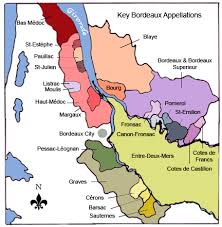 Château Léoville-Las Cases is located in Saint Julien-Beychevelle next door to Château Latour. It is one of the oldest Médoc estates that once upon a time belonged to some of the most influential and wealthiest noble French families, prior to being purchased by the Las Cases family. As a result of the French Revolution, the estate was split up at some point between 1826 and 1840 creating Château Léoville-Las Cases. The estate is considered to be large according to Bordeaux standards enveloping 240 acres of vineyards. Saint-Julien is the smallest of the four main Médoc appellations with 2,175 acres of vineyards on the left bank of Gironde. The vineyards are planted with 65% Cabernet Sauvignon, 19% Merlot, 13% Cabernet Franc and 3% Petit Verdot. 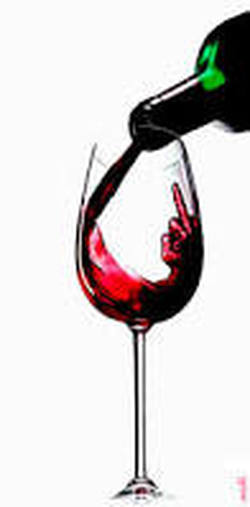 I have much more to tell you about the family history, terroir, and current management of Château Léoville-Las Cases, but my story stops here for now. When the appropriate time comes, I will uncork this bottle and share the rest of the story along with my tasting notes. The wine is long past peak, but I’ve had a few vintage Bordeaux lately that have pleasantly surprised me! What’s in your wine glass this Wednesday?
Cheers! Penina To leave a comment or if you have an inquiry, please contact me at [email protected] 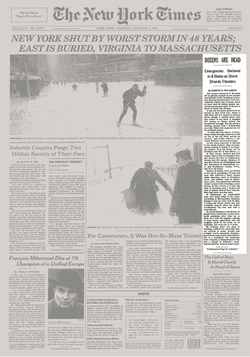 As I sit here waiting for “Blizzard Stella” to arrive, I’m reminded of another blizzard that took New York by “storm” in 1996 and dumped over 22 inches of snow. The Blizzard of 96’ has the distinction of being included in the list of the 10 biggest snowstorms in NYC history! Will “Stella” make this list? It certainly could according to the latest snowfall predictions! And speaking of lists, the 1996 Chateau Pavie Macquin, Saint-Emilion Grand Cru is included in the list of best vintages of this Chateau. And one can truly understand why. This is an amazing wine and I express gratitude to my friend who shared it with me. Chateau Pavie Macquin is located in Saint-Émilion on the right bank of Bordeaux. Agricultural engineer Albert Macquin purchased the Chateau in 1887. Macquin is known for producing more than a million plants that were less susceptible to chlorosis and who is at the origin of using the grafted plant to help eradicate the phylloxera epidemic, saving his vineyard as well as the entire Bordeaux region! He also developed scientific vine plot monitoring. Albert’s three grandchildren and great grandchildren now own the chateau. This Bordeaux blend is Merlot dominant with 25% Cabernet Franc. We decanted the wine, but didn’t wait to start enjoying it. As a rule Bordeaux wines reach their peak 10 to 12 years following the vintage. After 21 years in the bottle, this wine drank beautifully! It still had a lot of character and intensity. Aromas of dark fruit, cherry and hints of spice were present. The palate offered rich black fruit, spice and silky tannins. The finish was long. Although the wine had lost some of its complexity, it was still an impressive pour. http://www.pavie-macquin.com As I watch Blizzard Stella roar through here tomorrow, I’ll be reveling in the winter wonderland from my sofa with a snifter of cognac, a roaring fire and a good book! Happy Monday!
Cheers! Penina To leave a comment or if you have an inquiry, please contact me at [email protected] |
Categories
All
|

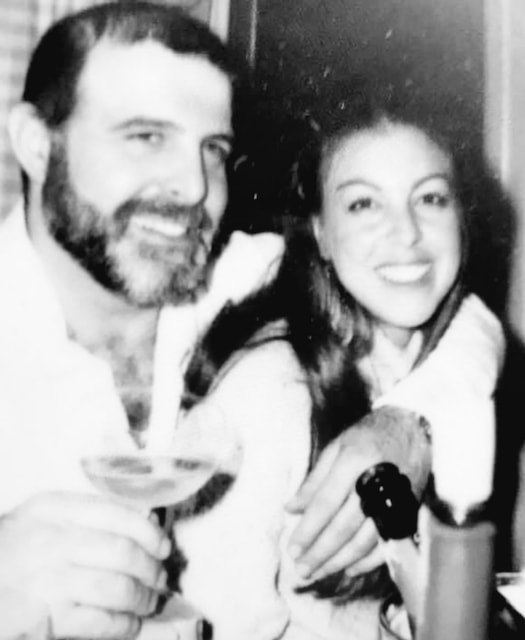
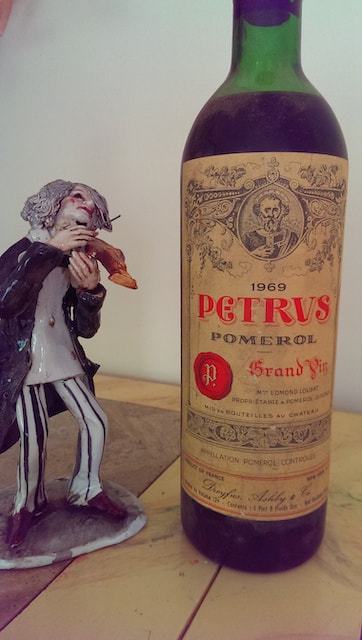
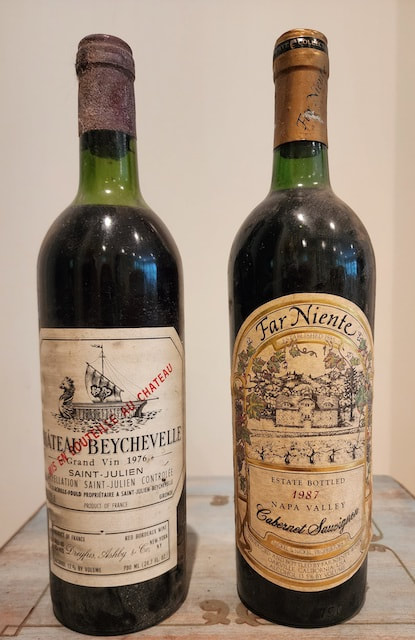
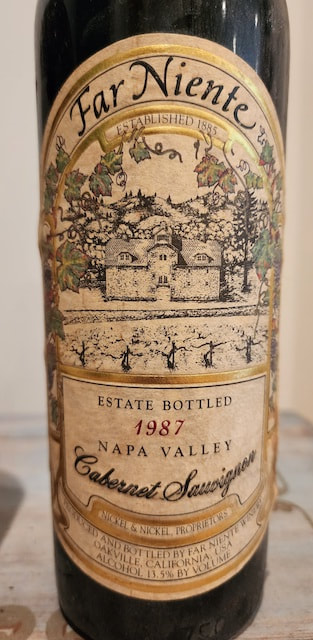
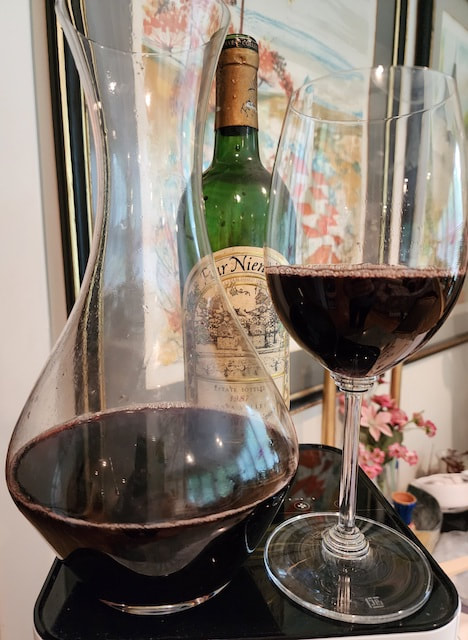
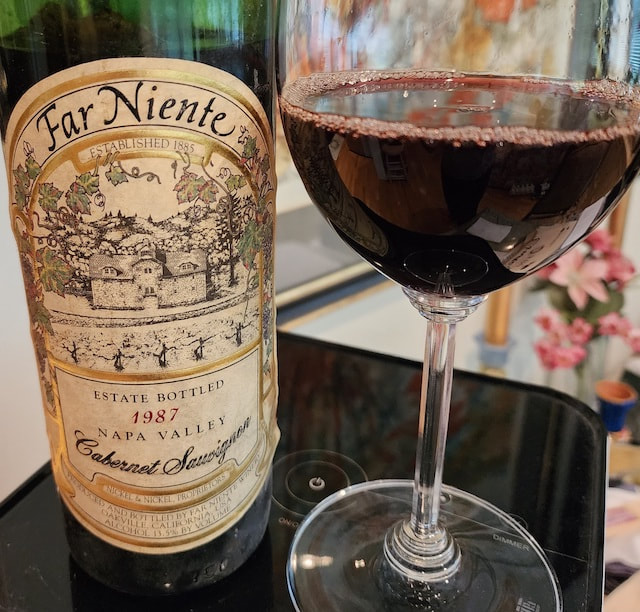
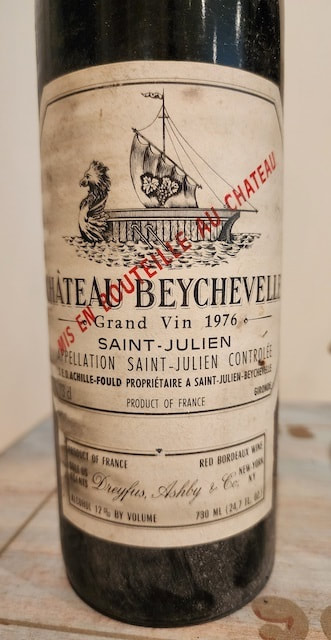
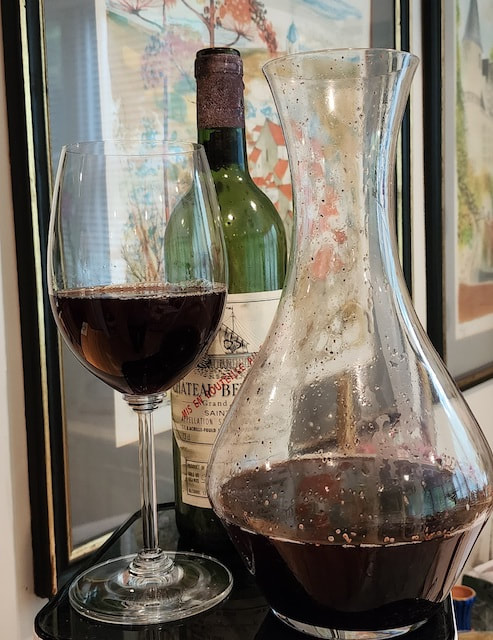
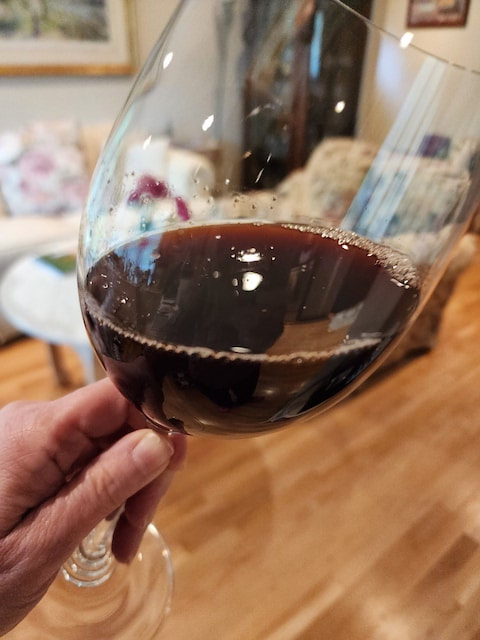

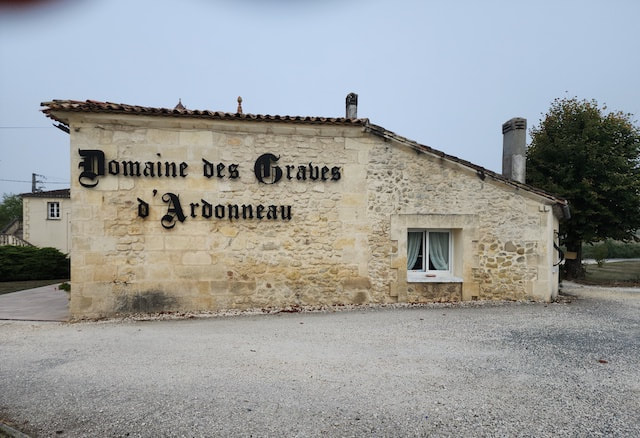
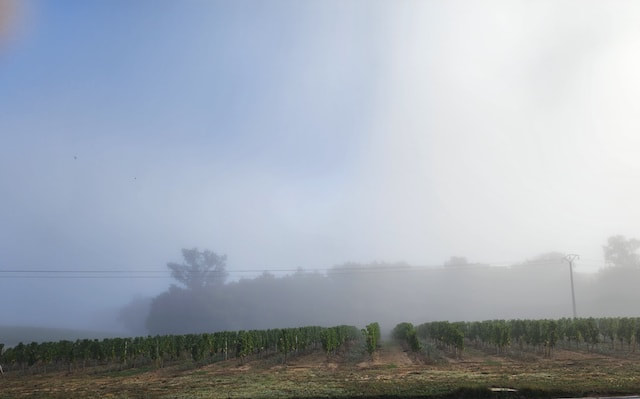
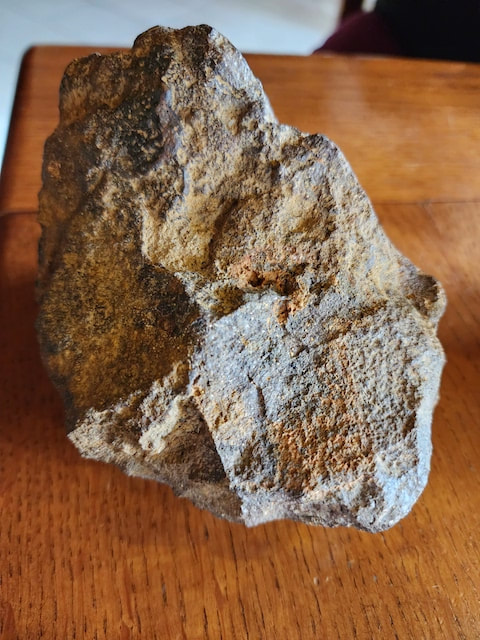
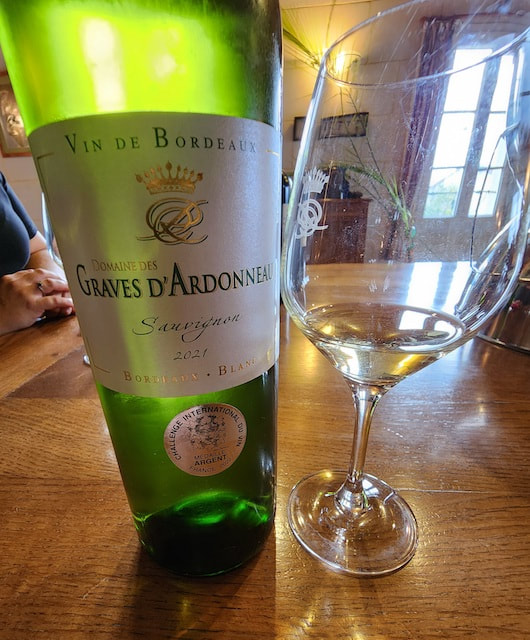
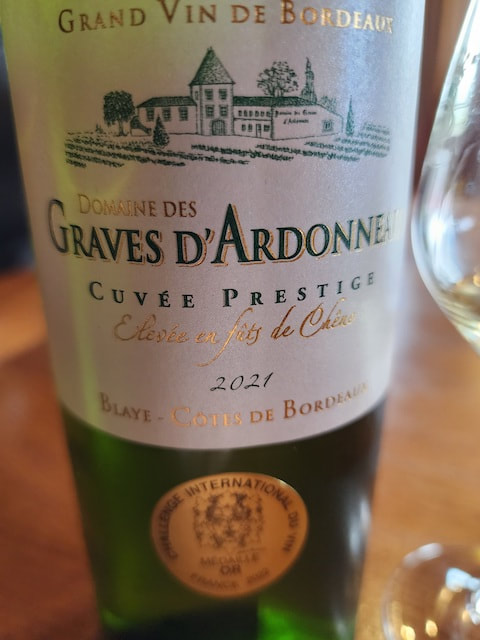
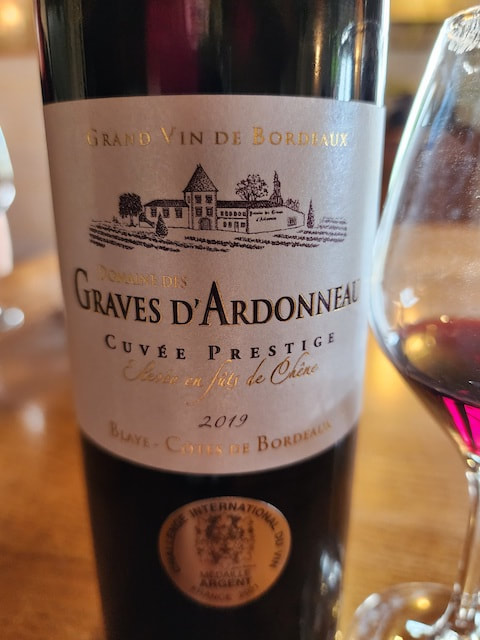
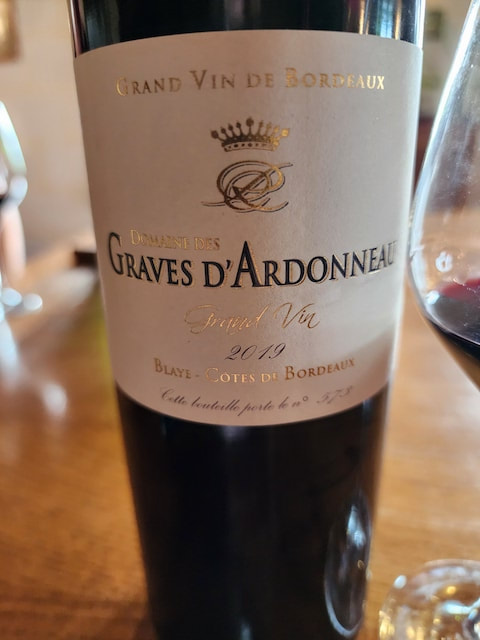
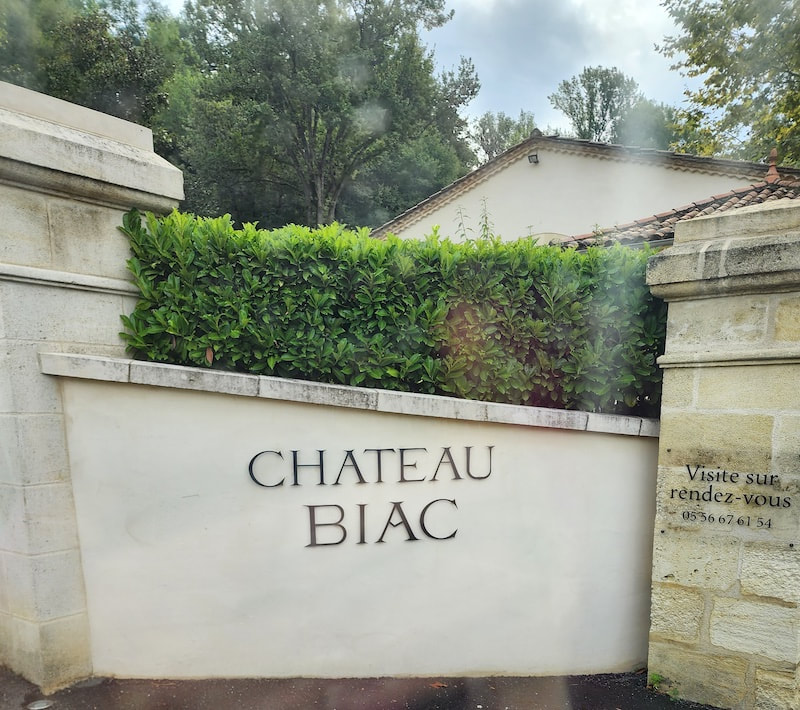
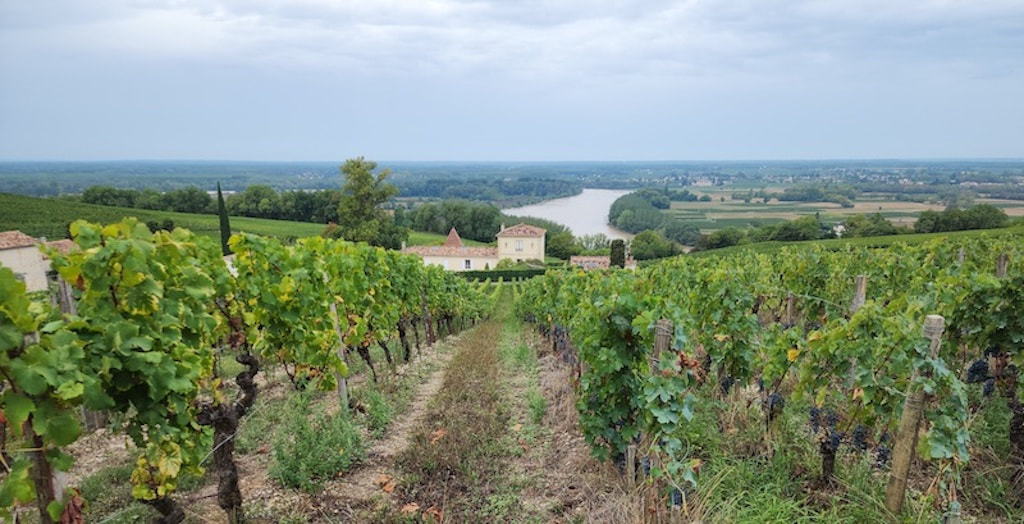

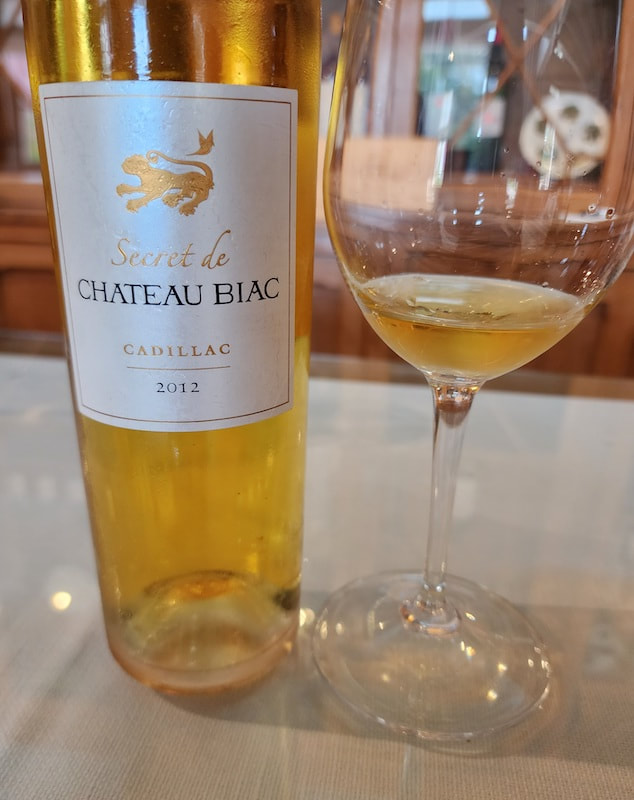
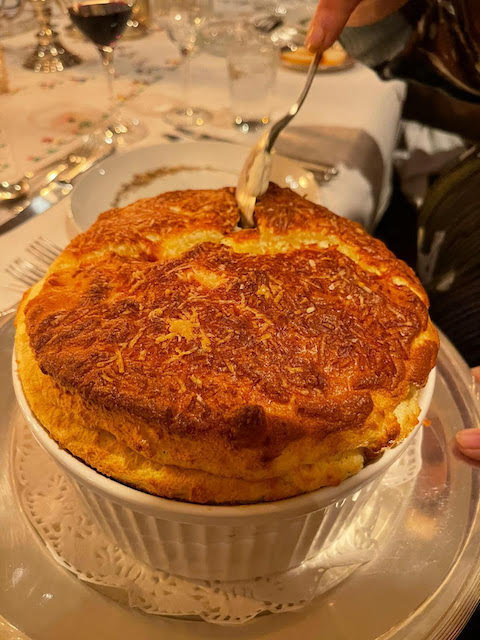
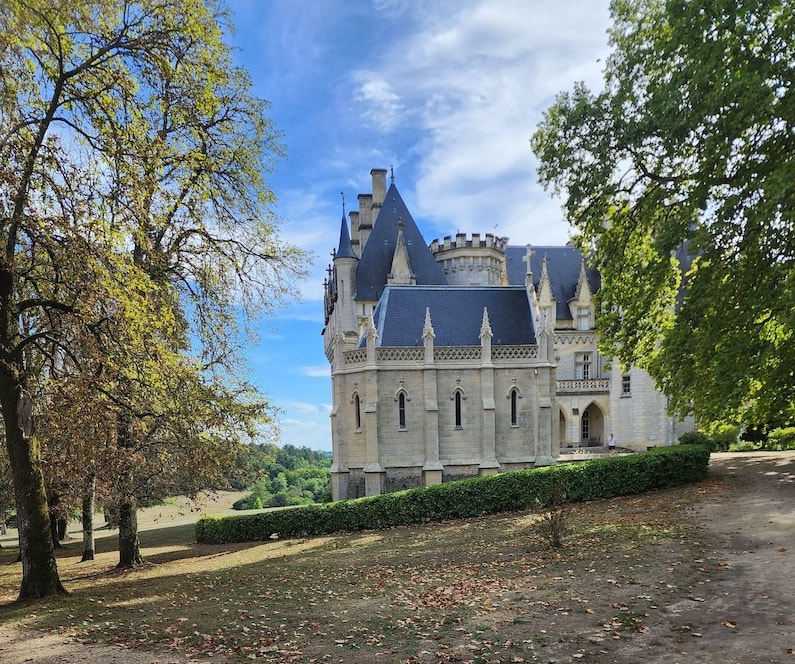
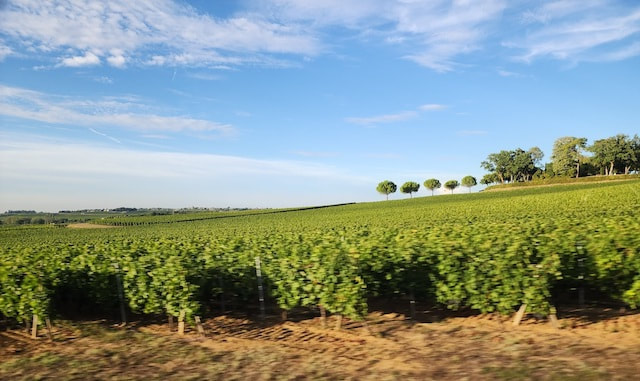
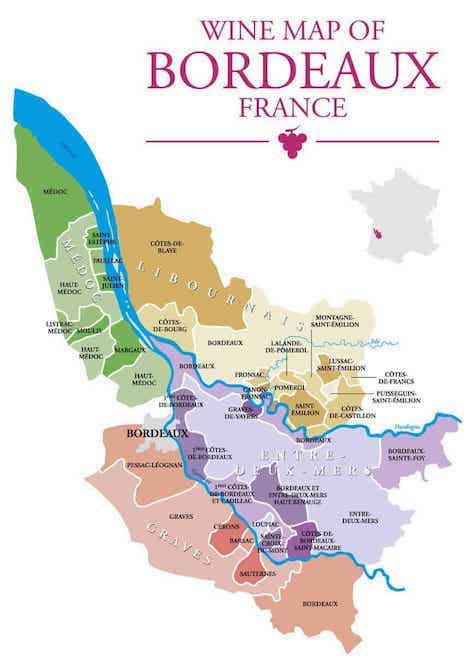
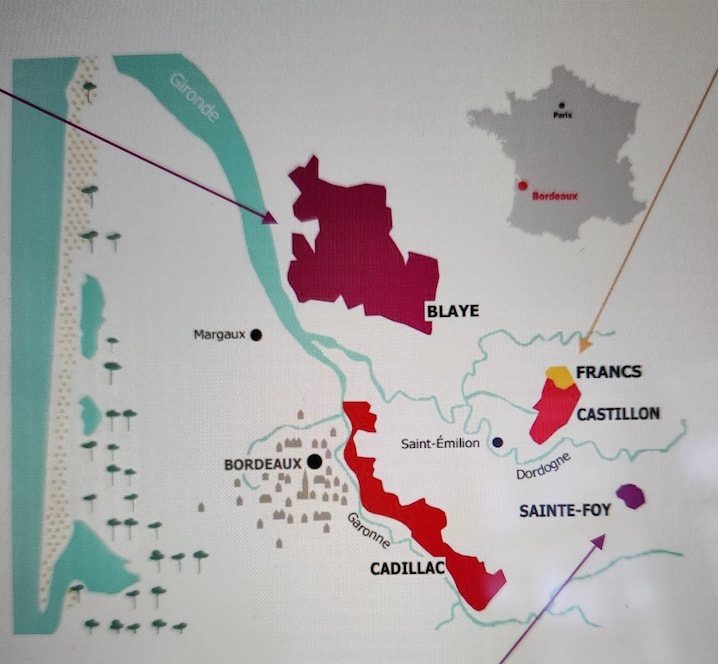
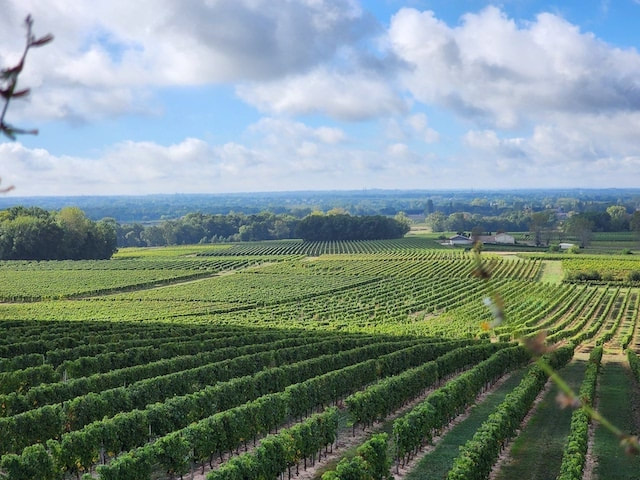
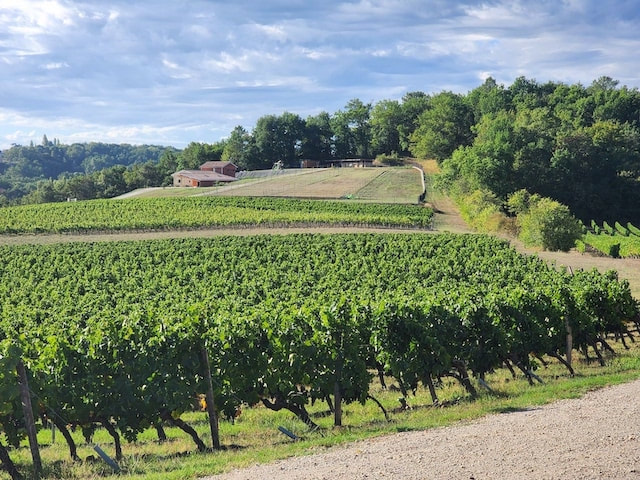
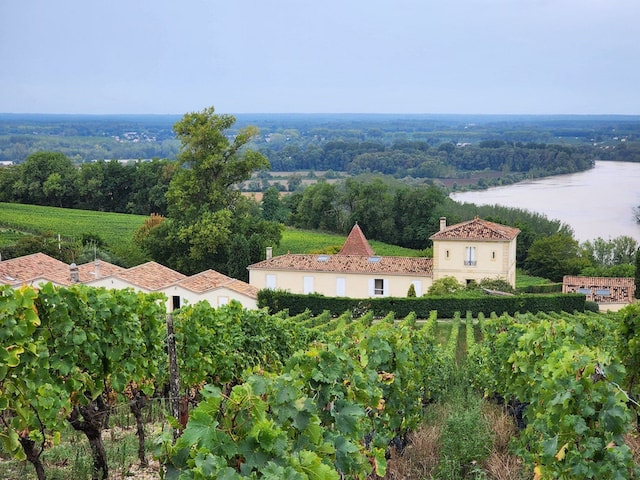
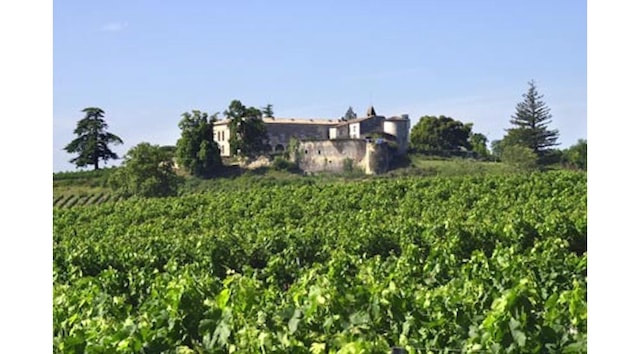
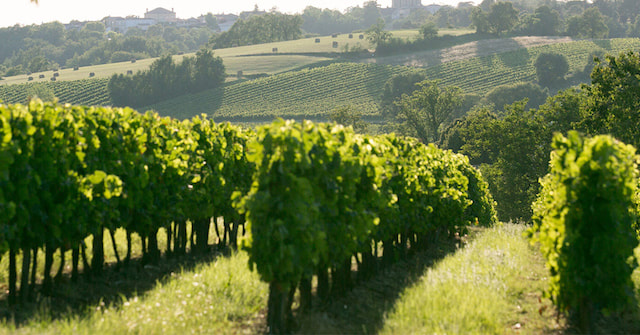
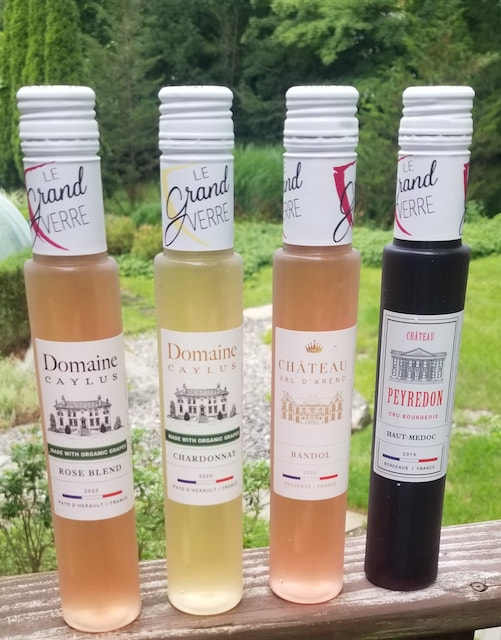
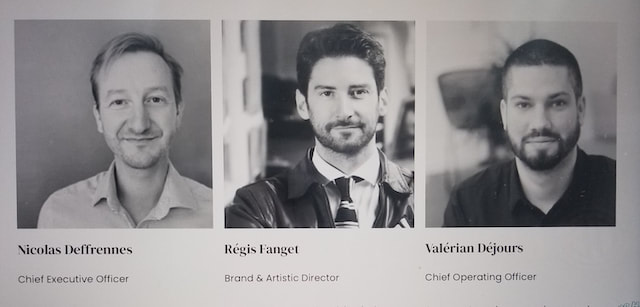
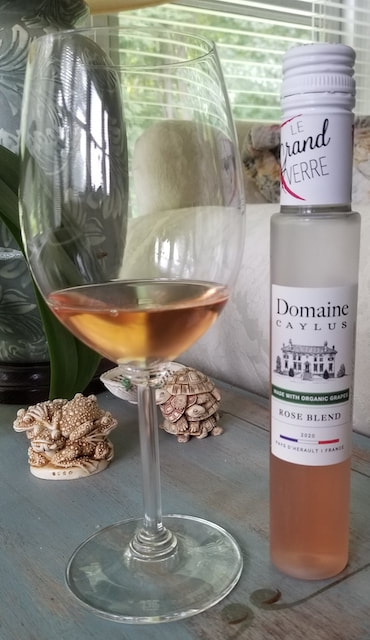
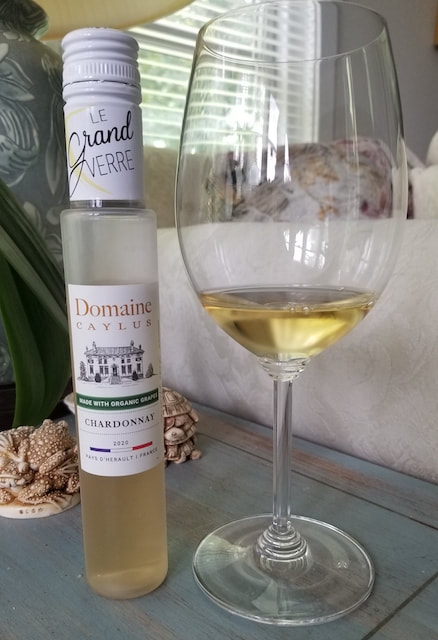
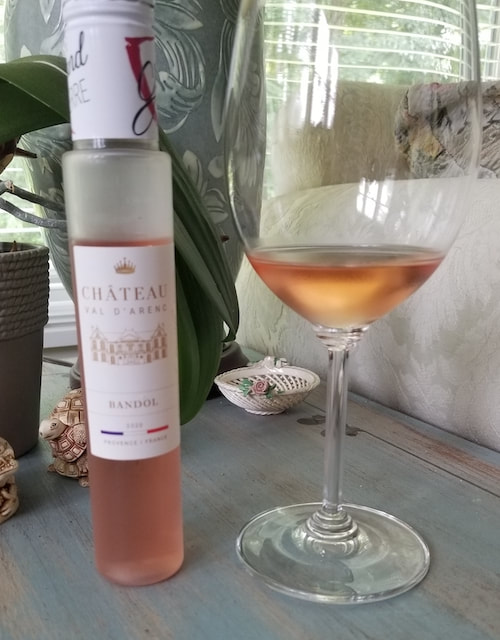
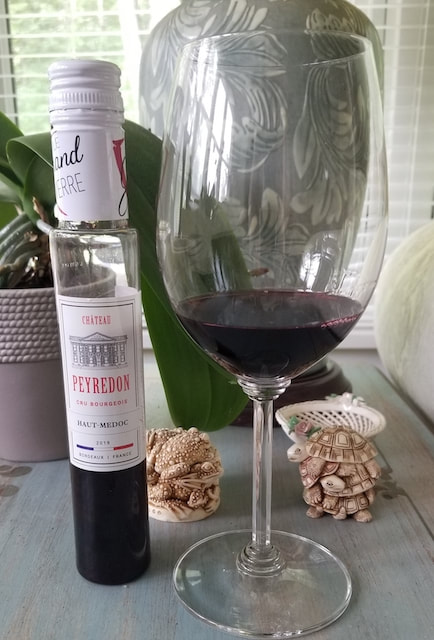
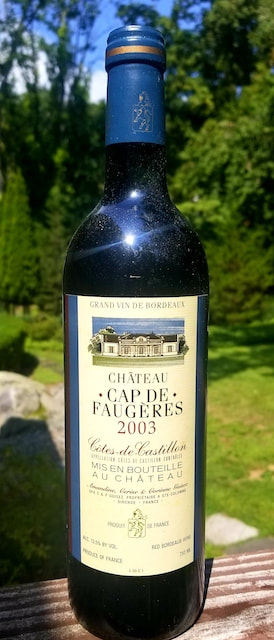
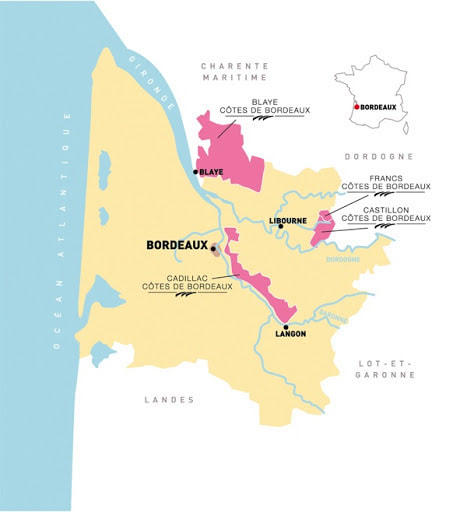
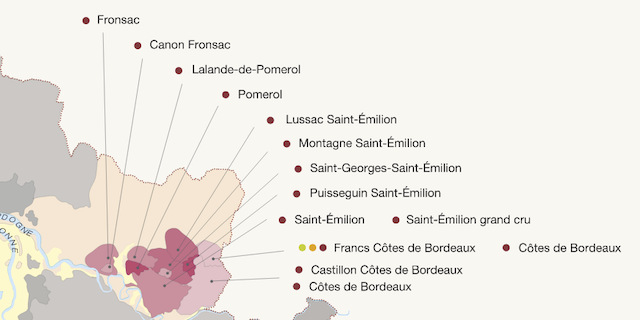
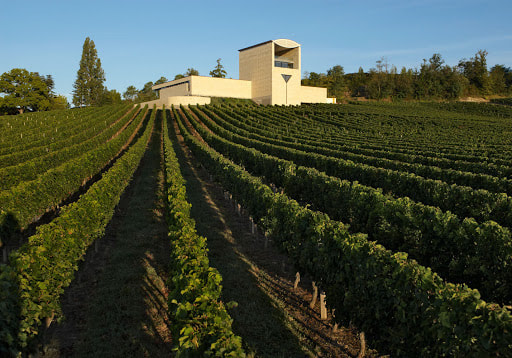
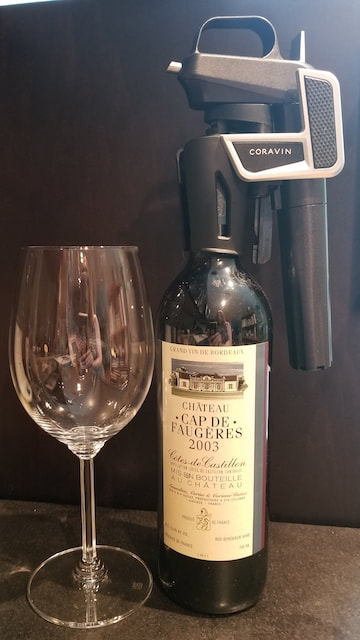
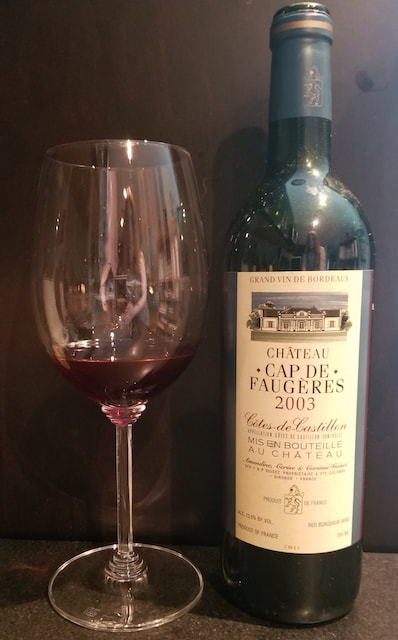
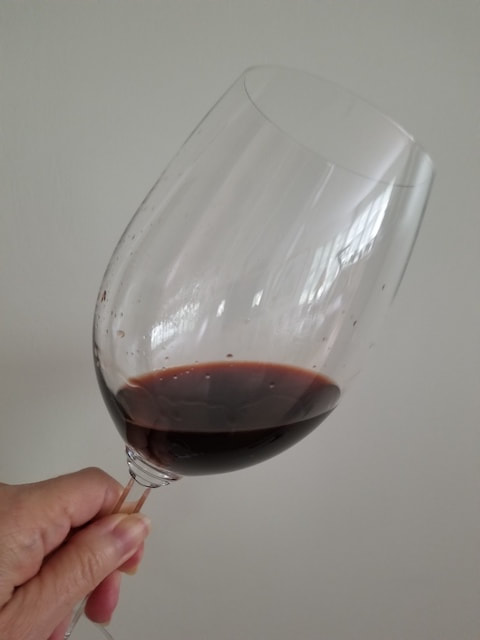
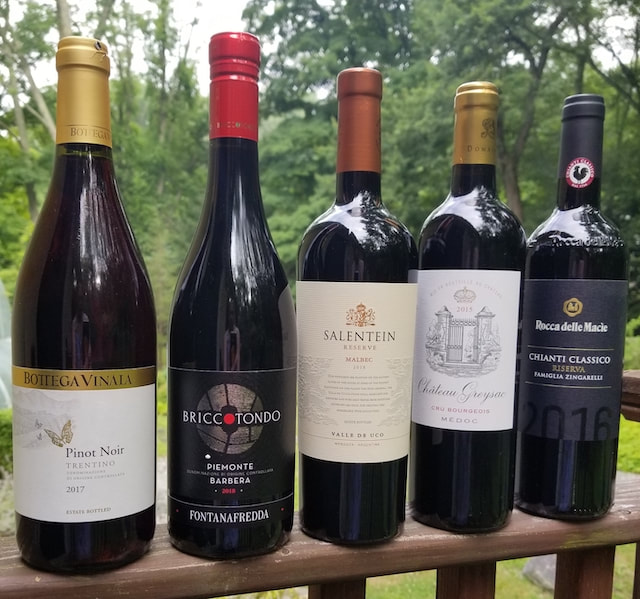
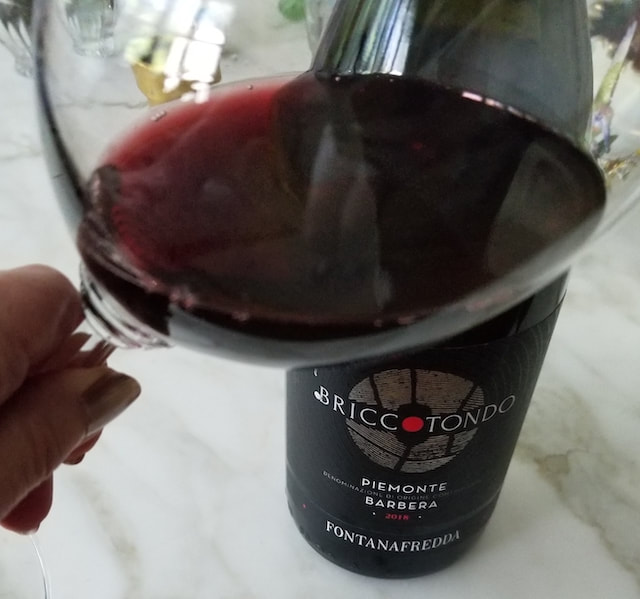
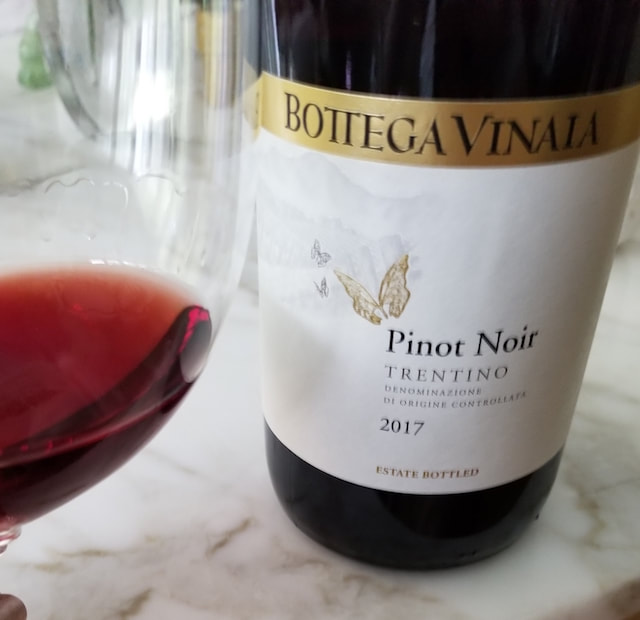
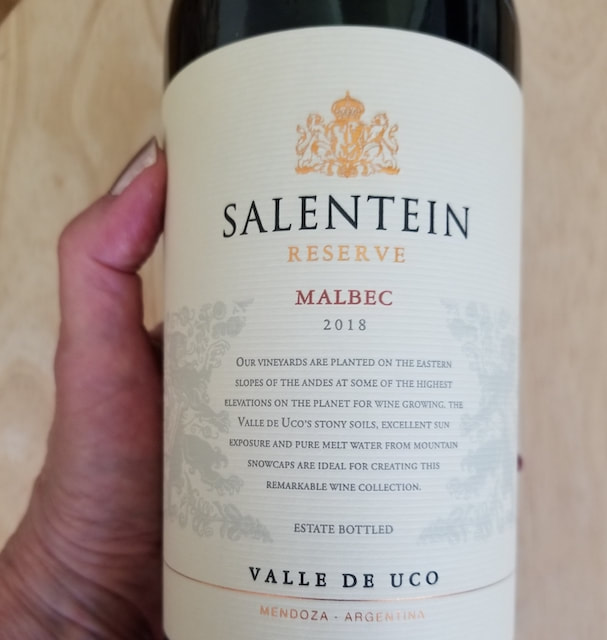
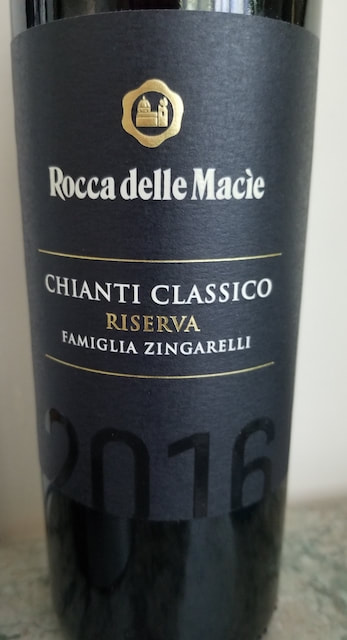
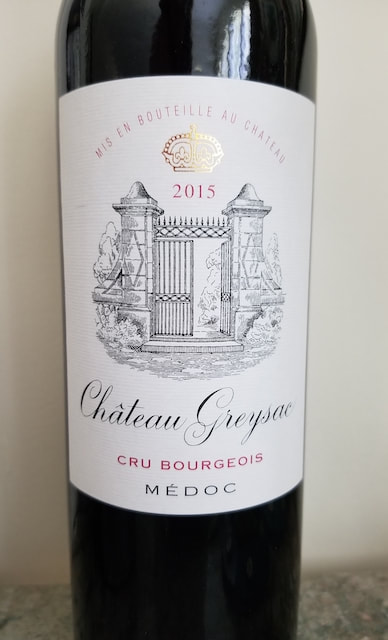
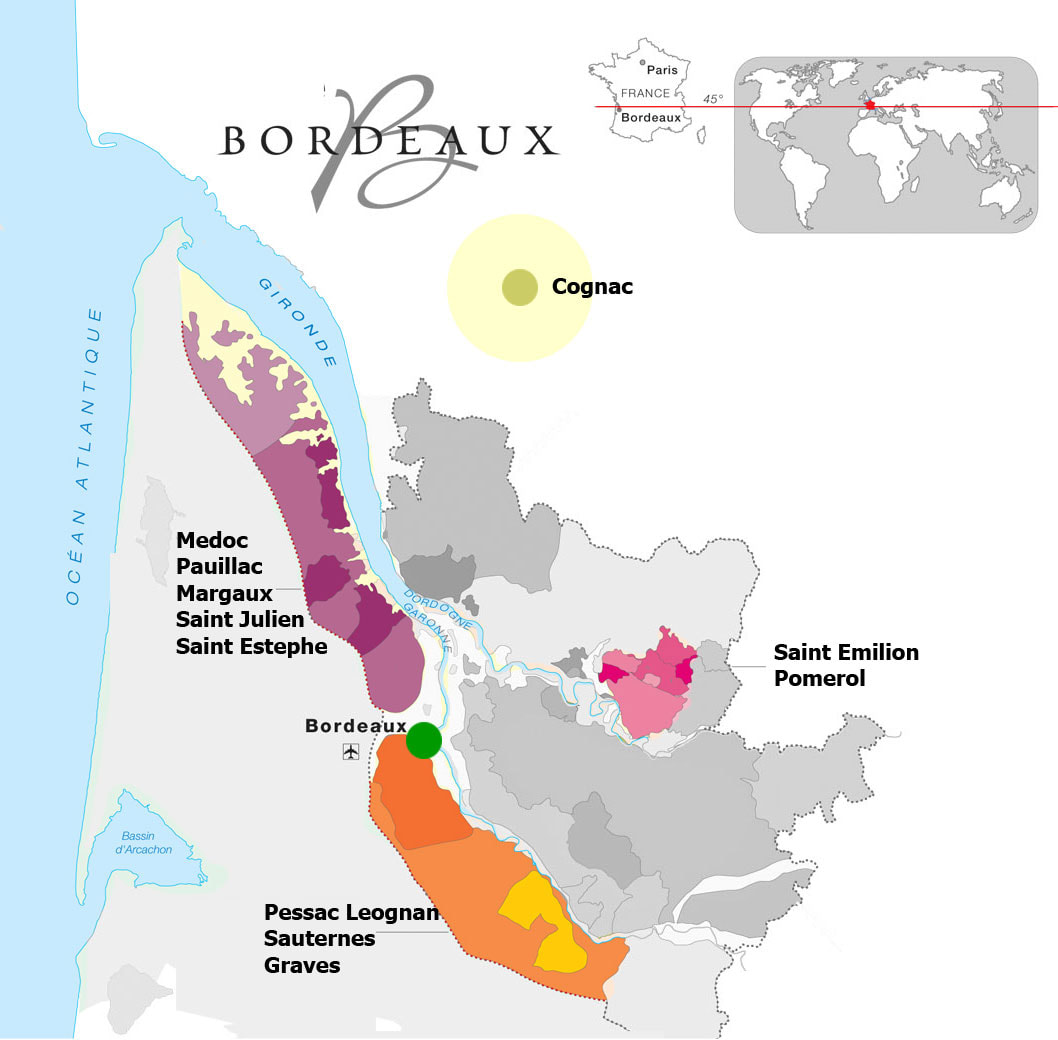
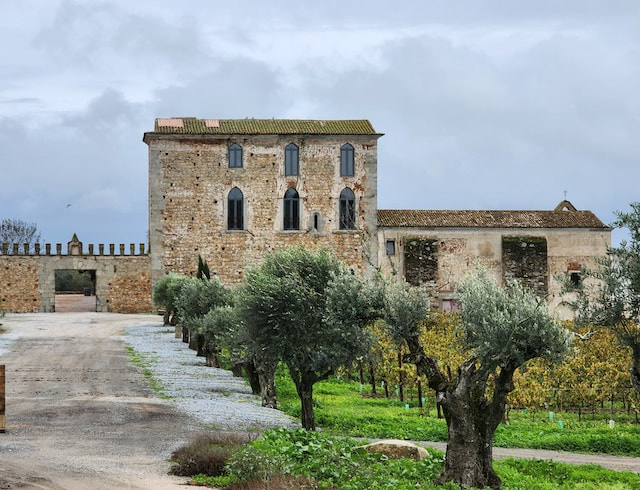
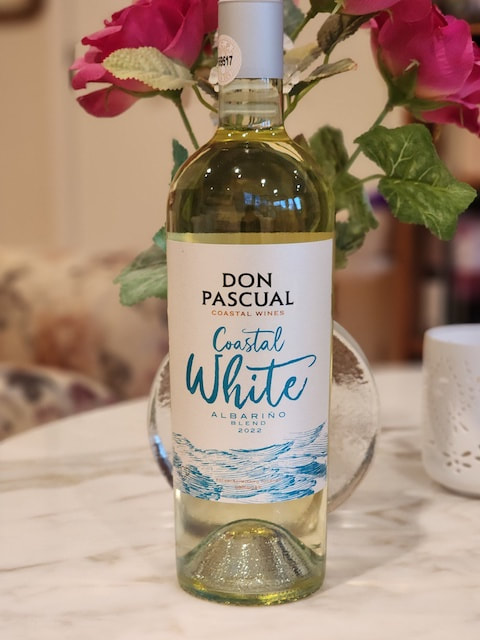
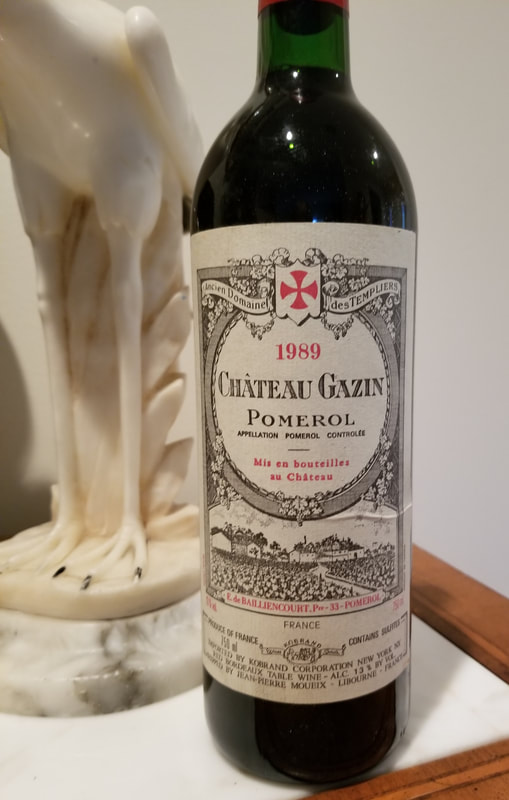
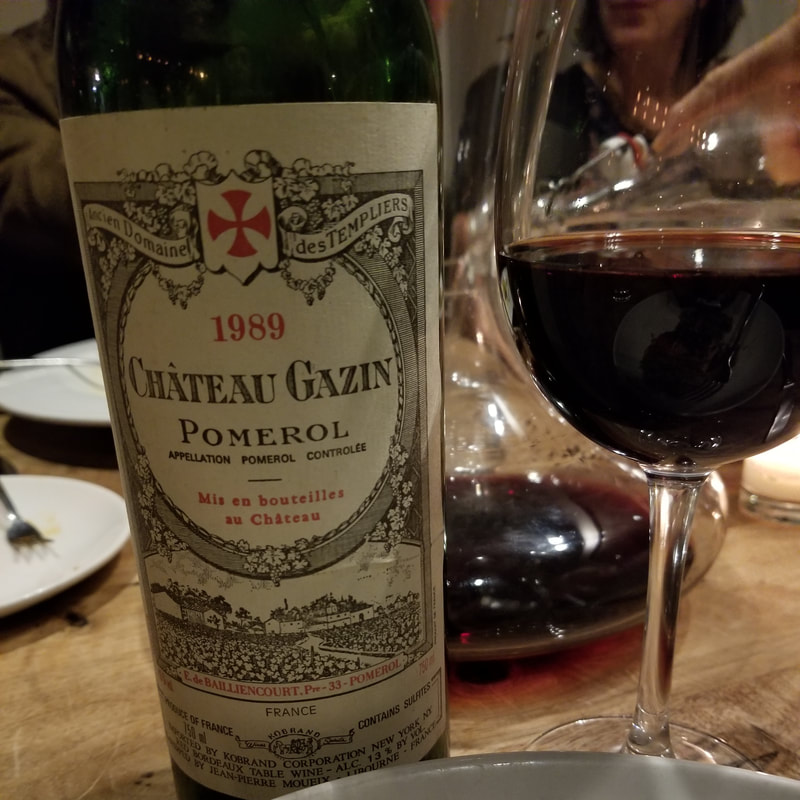
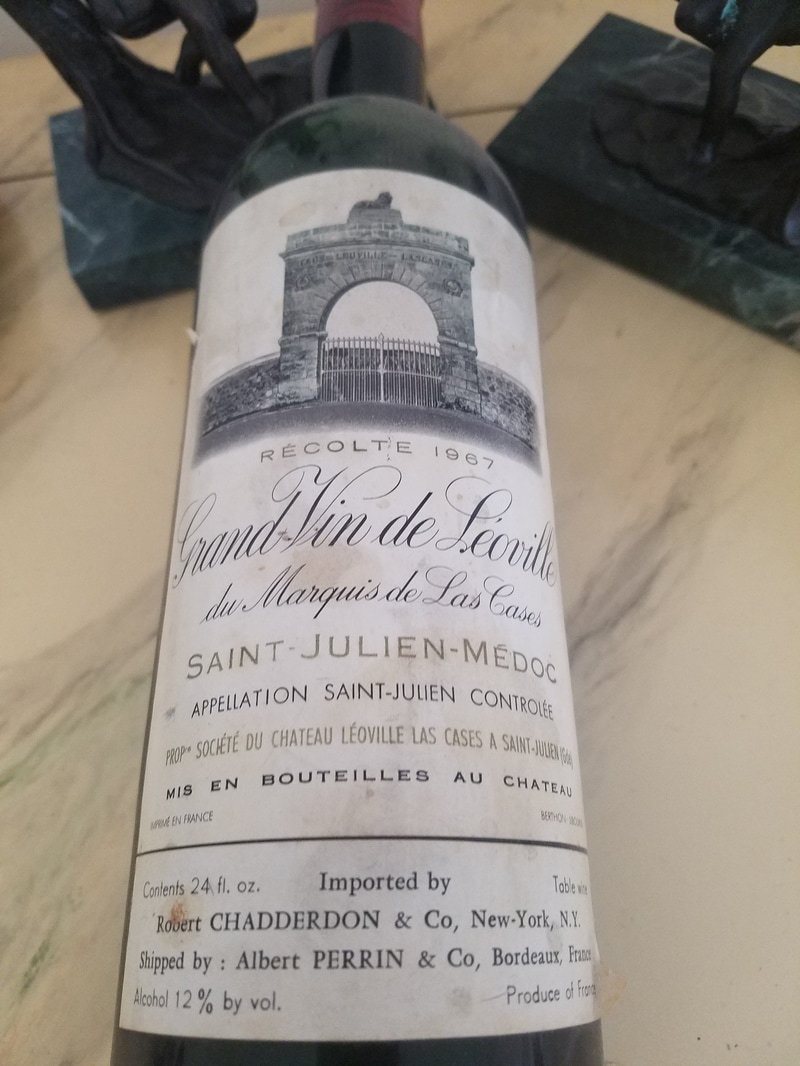
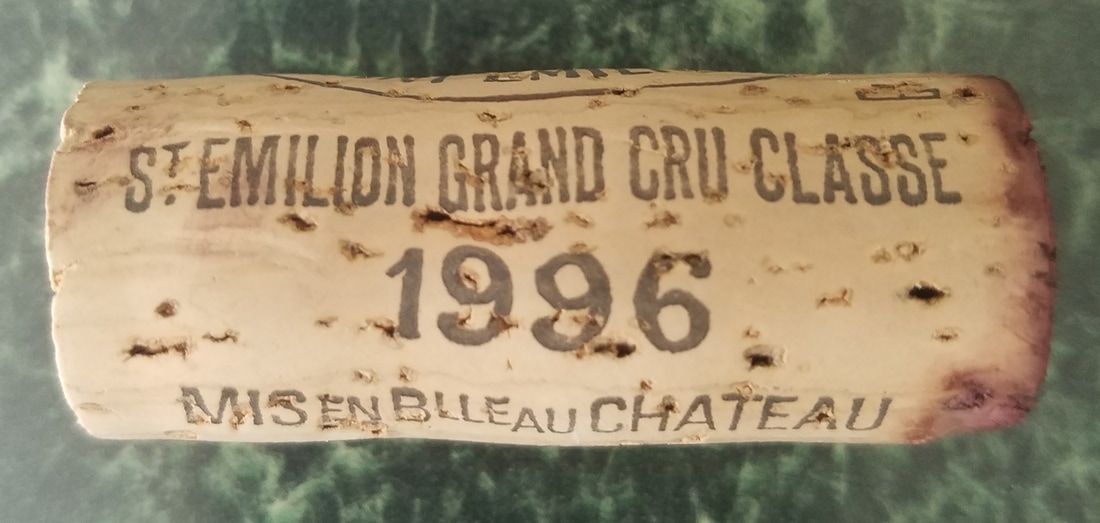
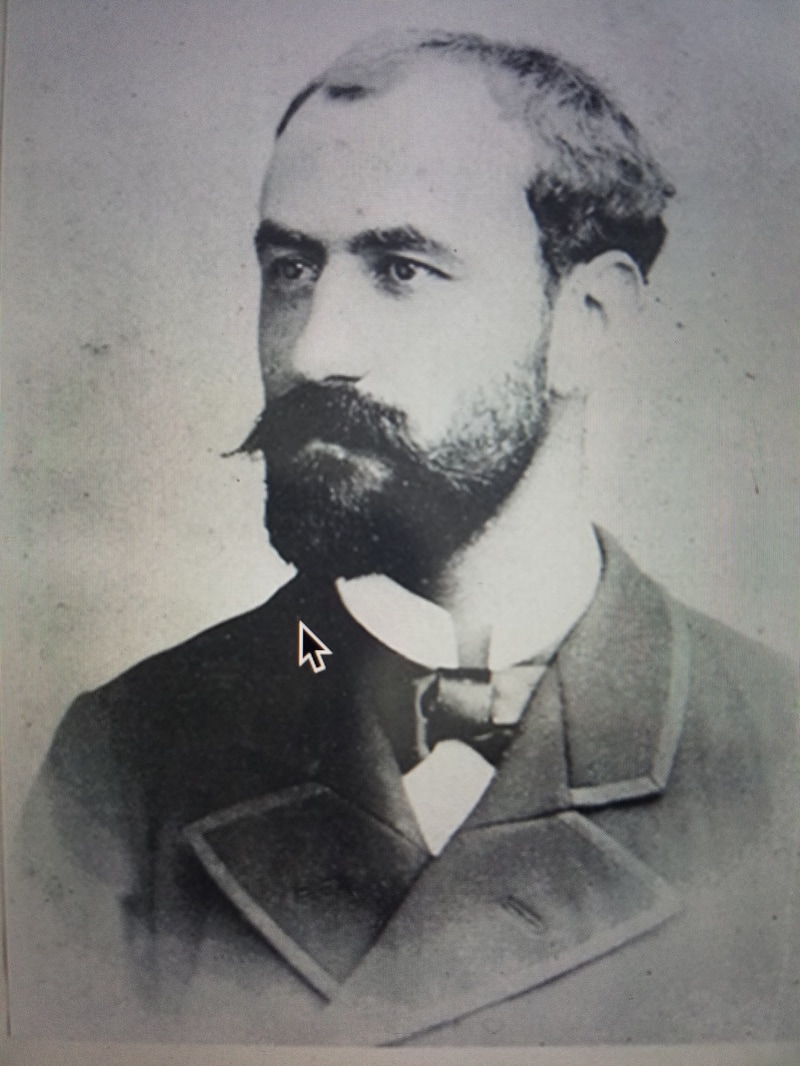
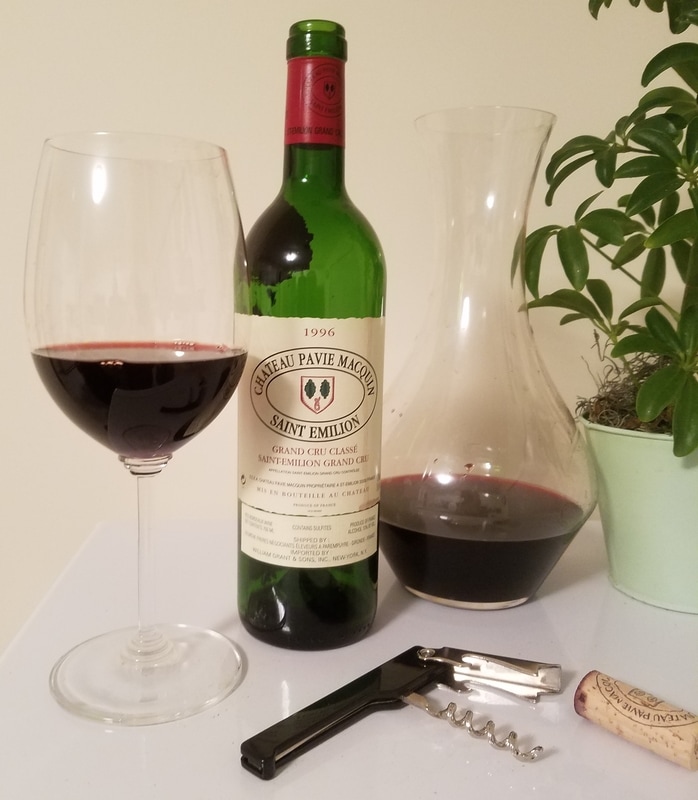
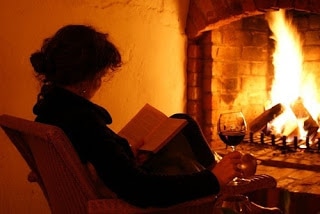
 RSS Feed
RSS Feed